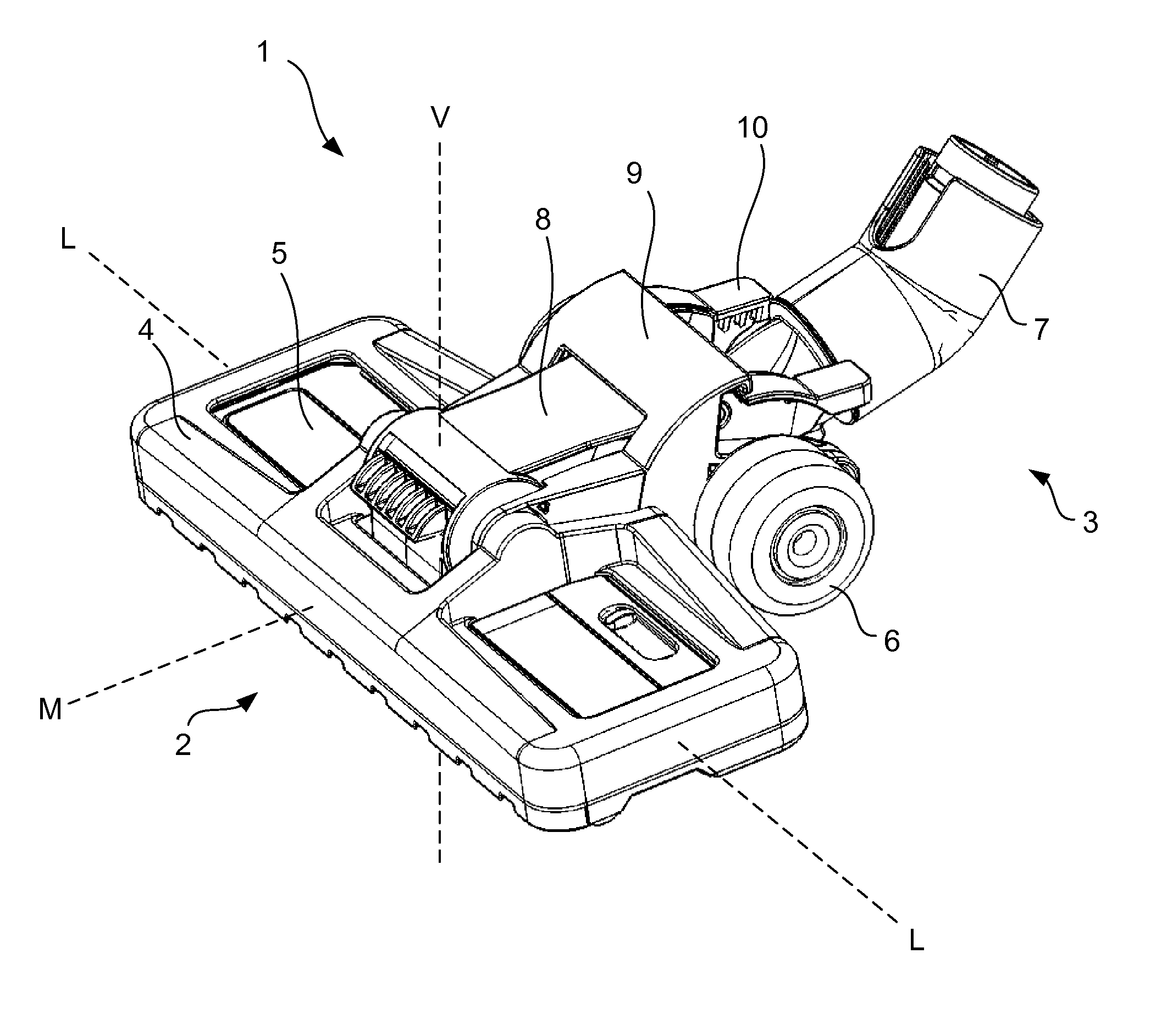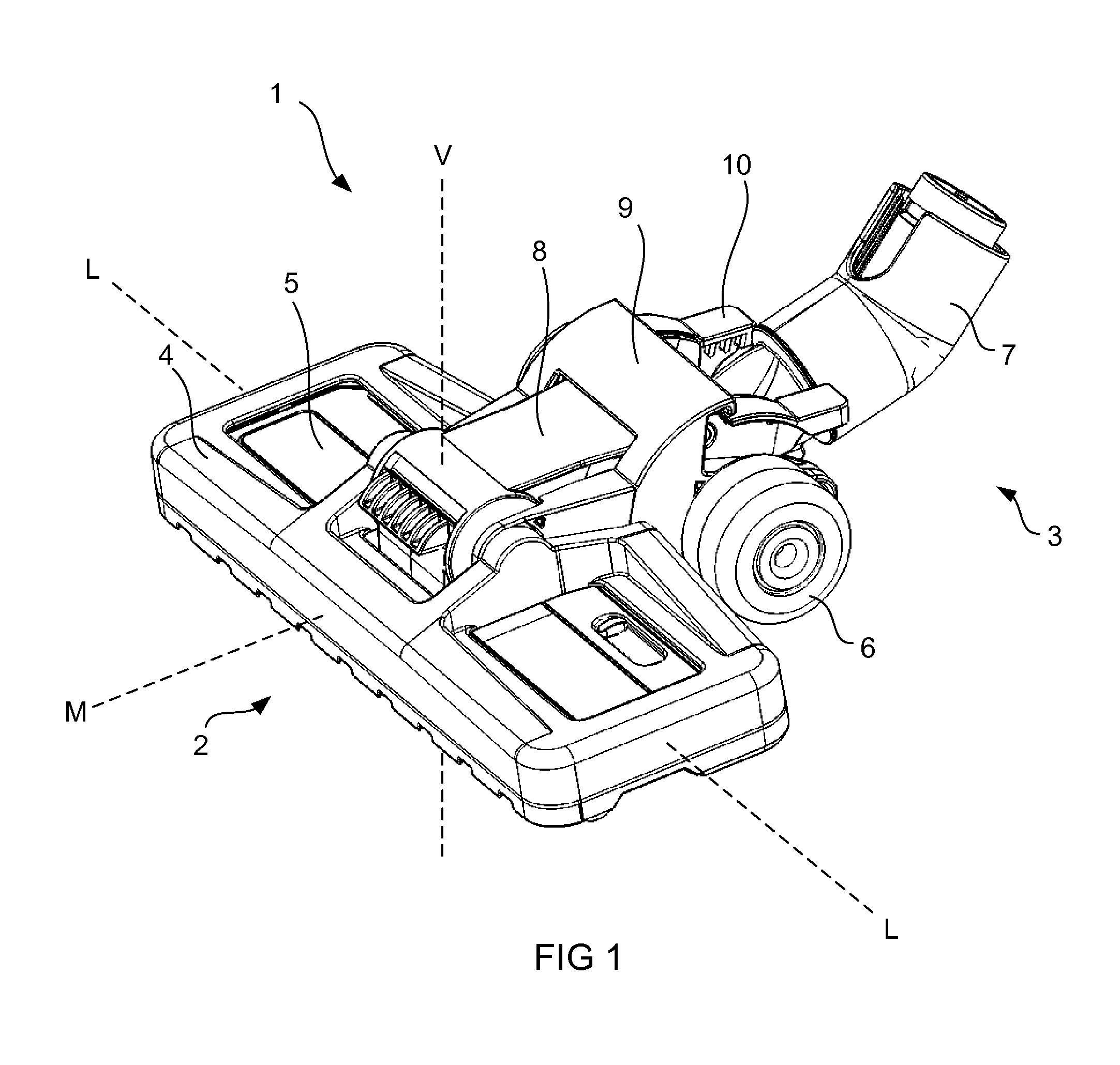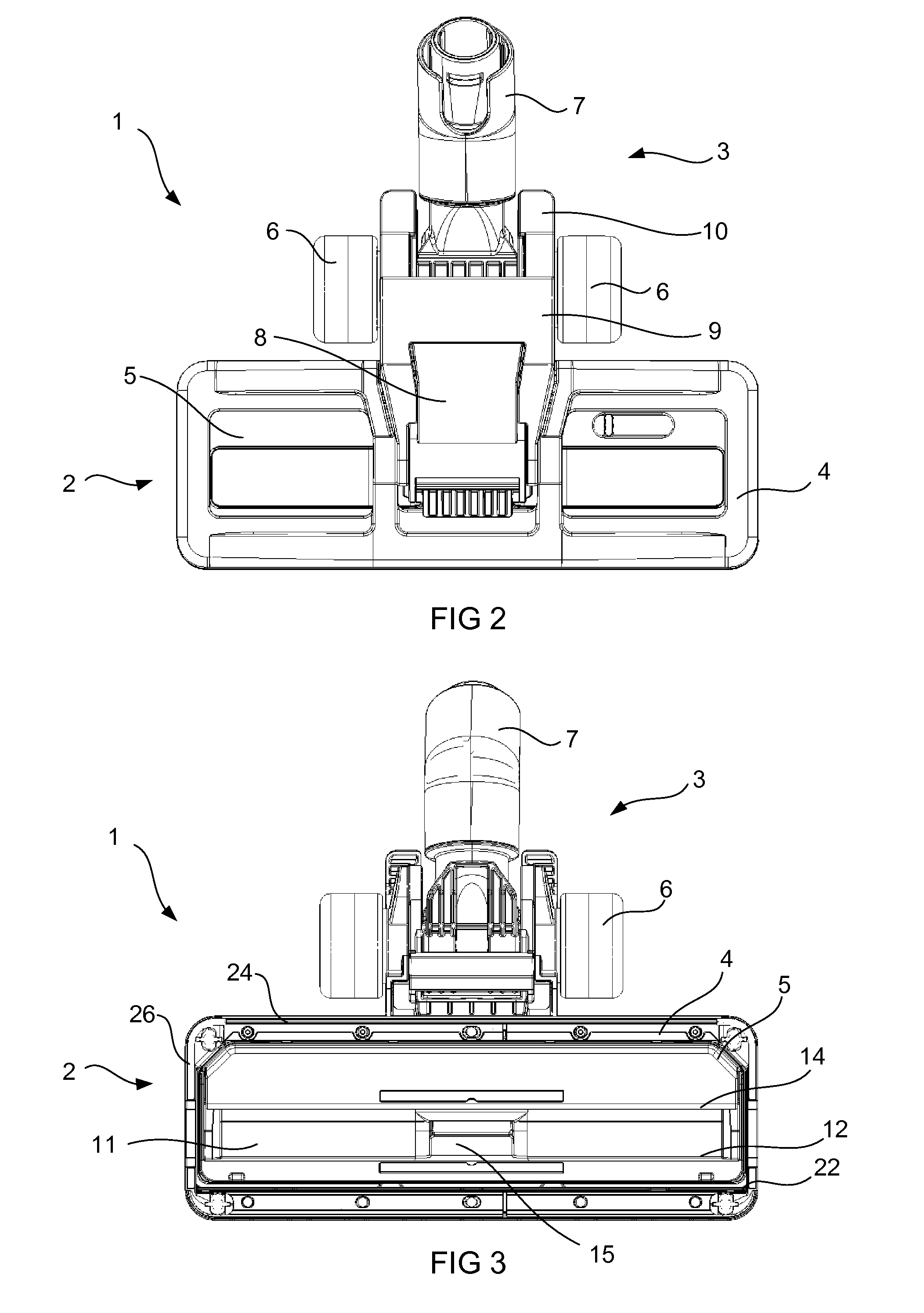Surface treating head
a surface treatment head and head technology, applied in the direction of suction hoses, cleaning equipment, suction nozzles, etc., can solve the problems of affecting the pick-up performance, affecting the sealing, and affecting the mobility of the surface treatment head, so as to improve the mobility of the surface treatment, improve the suction, and improve the sealing
- Summary
- Abstract
- Description
- Claims
- Application Information
AI Technical Summary
Benefits of technology
Problems solved by technology
Method used
Image
Examples
Embodiment Construction
[0027]FIGS. 1, 2 and 3 show a surface treating head 1. The surface treating head 1 comprises a main body 2 and a rolling support 3. The main body 2 comprises a first body which is a soleplate body 5, a support body 4 that surrounds the soleplate body 5. The support body 4 and the soleplate body 5 are moveable relative to one another in a substantially vertical direction, i.e. substantially parallel to axis V. The rolling support 3 comprises wheels 6 and a swivel duct 7. The swivel duct 7 allows the surface treating head 1 to be attached to a vacuum cleaner, for example by way of a wand attachment in the case of a cylinder- or canister-style vacuum cleaner. The swivel duct 7 is in fluid connection with the main body 2, and in particular with the soleplate body 5, by way of duct 8. Lever 9 and catch 10 are provided on the upper side of the surface treating head 1 and which can be used to select and de-select different relative positions of the soleplate body 5 and the support body 4. ...
PUM
 Login to View More
Login to View More Abstract
Description
Claims
Application Information
 Login to View More
Login to View More - R&D
- Intellectual Property
- Life Sciences
- Materials
- Tech Scout
- Unparalleled Data Quality
- Higher Quality Content
- 60% Fewer Hallucinations
Browse by: Latest US Patents, China's latest patents, Technical Efficacy Thesaurus, Application Domain, Technology Topic, Popular Technical Reports.
© 2025 PatSnap. All rights reserved.Legal|Privacy policy|Modern Slavery Act Transparency Statement|Sitemap|About US| Contact US: help@patsnap.com



